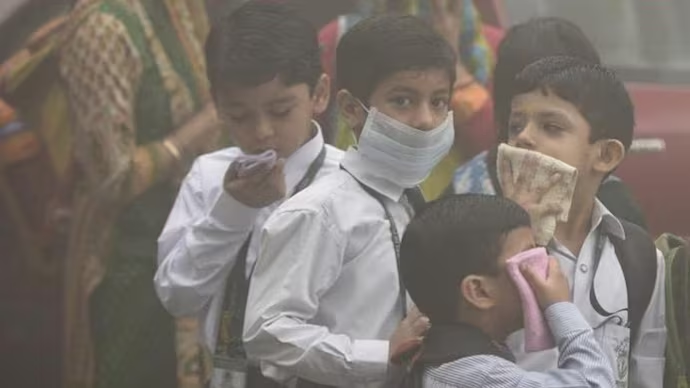In an era where mental health challenges among students are reaching unprecedented levels, globally recognized yoga guru Dr. Hansaji Yogendra, Director of Mumbai-headquartered The Yoga Institute, offers a beacon of hope. In a candid conversation with Education Post’s Prabhav Anand, Dr. Yogendra shares her profound insights into how yoga and meditation can serve as powerful tools to combat the growing stress, anxiety, and depression faced by today’s youth. Her approach is not just about physical fitness but about achieving holistic well-being—balancing the body, mind, and spirit.
Dr. Yogendra says that yoga is far more than a series of physical postures; it is a transformative practice that helps individuals connect with their inner selves. She underscores the importance of integrating yoga and meditation into daily routines, particularly for students burdened by academic pressures and societal expectations.

One of the standout moments from the interview is when Dr. Yogendra articulates, "Yoga is not just about bending your body; it's about stretching your mind and reaching new levels of inner peace. When students find this balance, they are equipped to handle life's challenges with resilience and grace." This quote encapsulates the essence of her teachings and the powerful impact yoga can have on mental health, making it an essential practice for anyone looking to thrive in today’s demanding world.
Q. Given the rising concerns about student mental health issues such as stress, anxiety, and depression, how do you believe yoga and meditation can specifically address these challenges? What are the most effective techniques for alleviating these problems?
It’s really becoming a grave concern to see young students deal with mental health issues. Yes, yoga and meditation can really bring a change. Firstly, yoga and meditation aren’t just about sitting still or stretching your body. It’s more about getting in touch with your inner self, and that can be a lot of fun and very rewarding.
When you practice yoga, you’re not only making your body stronger and more flexible, but you’re also calming your mind. Poses like Matsyasana or Makarasana are perfect for releasing tension and relaxing. And when you add breathing exercises like Bhramari, you really start to feel that stress and anxiety go away. For dealing with depression, there are uplifting yogasanas like Dhanurvakrasana and there are also some cleansing practices called kriyas which help to cultivate enthusiasm.
Meditation is another powerful technique. It’s not just for sadhus. Students can definitely benefit from a few minutes of daily meditation. Meditation helps you focus and stay present. It makes your mind sharper and better at handling the challenges of school and daily life. I believe that yoga and meditation help you find balance. You get a broader vision about yourself and your life.
Meditation and yoga make you physically fit, and everyone wants to be fit these days. Yoga is a big trend now. This is very good because it means more students are open to trying it and getting its benefits.
Q. In your experience, what common mental health issues do students face, and how do these impact their academic performance and daily life? How can yoga and meditation practices be tailored to these specific issues?
Over the years I have observed that students often deal with stress because of parental or peer pressure. Some of them are overwhelmed by the academic workload. This causes anxiety and could lead to depression if they do not meet certain expectations. And depression is on rise in recent times. These issues can seriously affect their performance, concentration, and motivation.
To help with these problems, yoga and meditation techniques can be adjusted by focusing on short sessions that fit into a busy student’s schedule. They can be taught simple breathing exercises that they can do to manage stress before exams. A daily practice of a few minutes of meditation and pranayama can make a big difference to their academic performance and to their life in general.
Q. What are some of the main barriers that prevent students from integrating yoga and meditation into their daily routines and how can these obstacles be overcome to promote greater accessibility and participation?
Actually, The biggest obstacle to practicing yoga for most students is lack of time. Then there is also the lack of awareness about how yoga and meditation can help them. Sometimes, lack of motivation is the issue. To overcome these, it is important to raise awareness about the benefits of yoga and meditation through special events, workshops and seminars in schools and colleges. Integrating short yoga and meditation sessions during breaks can make these practices more accessible to them. Providing online resources and apps that offer guided practices that students can do anytime can also benefit them.
Q. How can educational institutions and universities effectively incorporate yoga and meditation into their programs to support students' mental health? What practical steps can they take to implement these practices successfully?
Since we started celebrating the International Day of Yoga, we find that there is definitely more awareness about yoga. We find a growing interest among schools and colleges to celebrate this day by organizing special yoga awareness events. However, institutions should include yoga and meditation into their daily schedules for students.
As a part of the curriculum, institutions can also offer courses that include yoga and meditation. Secondly, setting up dedicated spaces for yoga and meditation on campus can provide a peaceful environment for practice. Regular workshops and classes with certified yoga instructors can also help students deal holistically with any mental health issues they may be going through.
Q. You have a significant social media presence. How can platforms like Instagram and YouTube be used to educate and inspire students about the benefits of yoga and meditation for mental health? What kind of content tends to be most impactful?
I find that social media has a great scope to reach students and educate them about the benefits of yoga and meditation. In recent times, in the media we find that it is very fashionable to practice yoga to become physically fit. However, not many are aware that yoga goes beyond the physical level – it is about your body, mind and soul.
To be more effective, social media needs to include short videos, such as quick tutorials and guided sessions that also emphasize the holistic aspect of yoga and stress its mental benefits. Sharing success stories from other students can also be inspiring. Hosting live yoga and meditation sessions engages students in real-time, making the experience interactive. Informative posts about the benefits of different practices and tips for fitting them into daily life can also to be motivating.
Q. What evidence or success stories can you share that demonstrate the positive impact of yoga and meditation on students' mental health? How can these examples be used to advocate for broader adoption of these practices in educational settings?
Students learn from examples. So inspiring stories make a big difference in educating young minds about the benefits of yoga for mental health. For example, if we share case studies of students who have improved their academic performance through these practices, then students listen with attention.
Apart from this, pointing to research that shows the effectiveness of yoga and meditation in reducing stress and anxiety provides solid evidence which they can believe. There are also statistics about successful outcomes from schools and universities that have implemented yoga programs which can advocate for adoption of these programs in educational institutions.
Q. How do incidents like paper leaks and academic dishonesty impact students' mental health, and what steps can be taken to address these issues and mitigate their negative effects on students?
For students who already have mental health issues such as anxiety, such incidents are extremely disturbing. In fact, incidents like academic dishonesty creates a stressful academic environment for all students, impacting their mental health negatively. To address these issues, it is essential to improve the moral fabric of the society. We need to provide an education set-up that promotes integrity and accountability. Introducing students and staff to moral values and spiritual texts that teach about the right way to do one’s duty can eventually lead to a clean and morally pure environment in our temples of learning.
Q. In what ways can yoga and meditation complement traditional mental health interventions such as counseling and therapy? How can these practices be integrated with conventional methods to provide a holistic approach to mental well-being?
With its holistic approach, yoga can complement traditional mental health interventions in several ways. It can enhance therapy by using mindfulness and relaxation techniques to support therapeutic processes. We can have integrated programs that combine counseling with yoga and meditation sessions to provide a more comprehensive approach. In this way, we can have a more holistic view of mental health that includes physical, mental, and emotional well-being of students. This will ensure a more rounded approach to mental health.
Q. What role can parents and guardians play in supporting students' mental health through yoga and meditation? How can they be encouraged to participate and support their children in these practices?
In a student’s life, parents and guardians can lead by example by practicing yoga and meditation themselves, setting a positive example for their children. Encouraging family yoga sessions creates a supportive environment at home. Educating themselves about the benefits and practices of yoga and meditation is also important. Maintaining open communication with their children about mental health and wellness helps in providing the necessary support.
Q. How can yoga instructors and mental health professionals collaborate to create specialized programs that address the unique mental health needs of students? What should be the focus of these collaborative efforts?

Yoga instructors and mental health professionals can organize joint workshops that combine yoga practices with mental health education. This will provide students with a more holistic support. They can come together and develop programs that can resolve specific issues like anxiety and depression among students in particular. Regular assessment and monitoring of student progress can ensure the effectiveness of these programs.
Q. Looking ahead, what do you see as the future of yoga and meditation in addressing student mental health? Are there any emerging trends or innovations in this field that you find particularly promising?
I find that digital integration, such as the use of apps and online platforms, makes yoga and meditation more accessible to students. We also offer a wellness app with an exclusive section for kids, designed to address their specific challenges and provide them with practical exercises. This innovative use of technology holds great promise. Also, the inclusion of holistic health education in schools is another positive trend.














